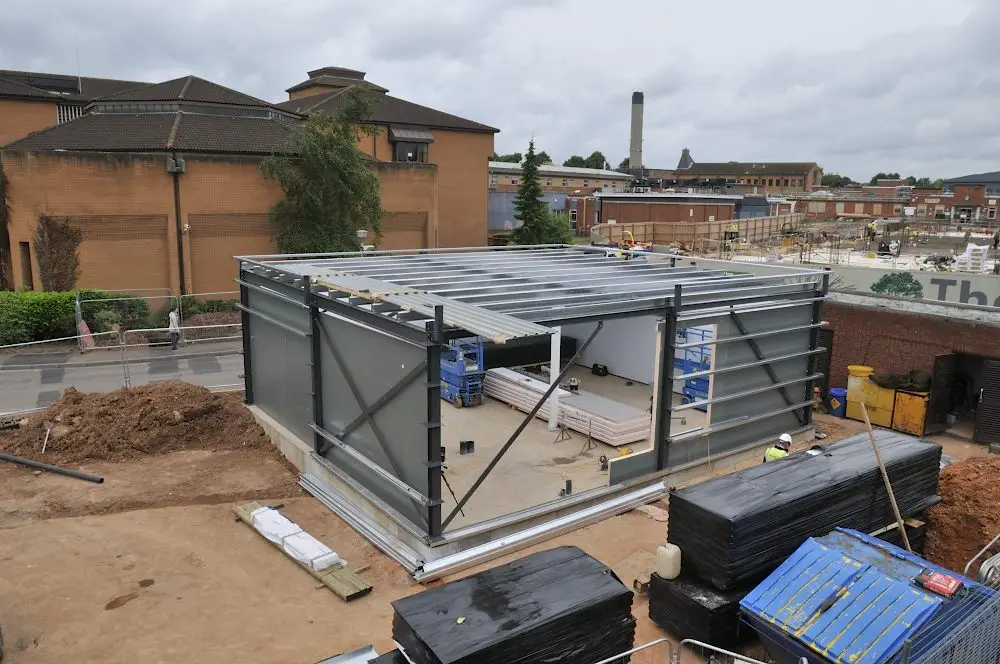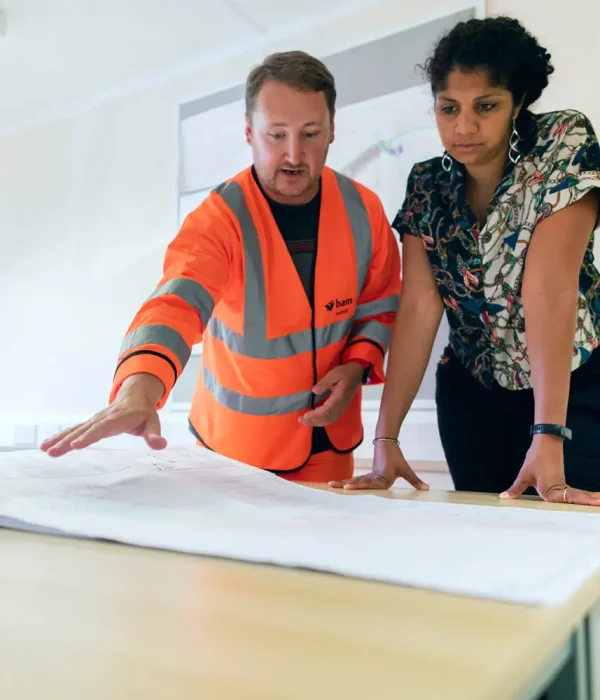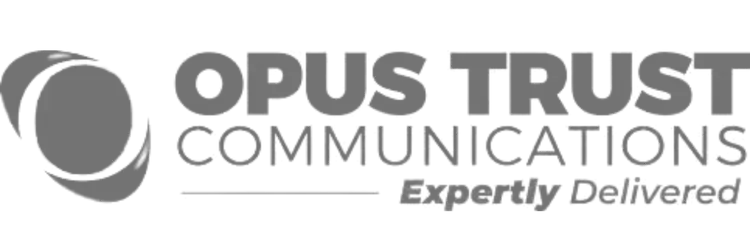Previous
Next

With an established and proven approach to data centre design and build, Secure IT Environments works closely with its clients to design their energy-efficient facilities by taking advantage of our expertise and continued learning. Fill in the form to request more information.

The key principles of our data centre design and build approach are based on simple, scalable, cost-effective but highly energy-efficient cooling and infrastructure technologies that deliver real value through the critical life cycle of the facilities infrastructure to the latest data centre TIA942 industry standards and provide significant best levels of power usage effectiveness (pue) for operational performance.
“I am writing to thank the quality of service provided by Secure I.T. Environments Ltd, which has been providing services for many years to support our daily operation and maintenance of data centre key infrastructure. We sincerely appreciate your team’s efficient, friendly, and prompt responses to customer service, and the level of detail and accountability on each project. I wish you all the success of your company and keep growing together in the future!”
“A data centre is considered the critical core of the business, so entrusting the critical fabric of its environment with a trusted partner was essential. The expertise and guidance provided by Secure I.T. Environments was comforting, they had the knowledge and expertise to ensure the project was a resounding success. The planning and implementation phases were executed with professionalism and quality, it was reassuring to know we had a trusted partner throughout this design and build project.”
Data centre design and build is an important project that needs to be carefully considered not just the initial design but putting in place the correct systems for ongoing protection and peace of mind. Using our company resources to design your Data Centre is essential. We can provide the optimum reliability and performance specification for your facility whilst at the same time offering the most cost-effective capital investment as well as the lowest ongoing operational costs.
Ensuring the right Design is in place to respond to the changing needs of your future business is vital. If you are concerned with the capability, physical security, resilience or efficiency of your Data Centre, then it is time to consider a more sustainable approach to providing the appropriate support services to the operational management of your servers and its rack architecture.
There are many reasons why you might need a change to your Data Centre Design and the equipment within it, although primarily they are in response to fundamental questions; will your Data Centre infrastructure (such as your UPS or generator) protect your business’s critical operation in the event of utility or component failure and is your facility operating at its most efficient. Do you have the resources to control the ongoing capacity of the server racks? What security measures need to be put in place?
PUE is an important measurement of energy efficiency in Data Centres, providing the metrics needed to make informed green efficiency changes in Data Centre infrastructure. With the cost of power rising, an efficient Data Centre Design not only delivers cost benefits to your organisation but is considerably less damaging to the environment.
Many low capital cost approaches in energy efficiency with often just small changes can save businesses thousands of pounds a year in power. PUE efficiency compares the total power energy used by a facility with how much is used by the IT components. The closer the figure tends to 1.0, the more efficient the facility is operating.
To ensure all equipment is in working order and will perform as designed in both normal operating conditions and an emergency, it is essential that regular maintenance inspections are planned and completed according to the manufacturer’s recommendations. The service inspections provide the end user with the confidence that their Data Centre is operating at its best.
We provide a range of UPS, generator, air conditioning, and fire suppression maintenance from a simple repair to 24/7 service contracts with guaranteed response times.
An early warning alert can prevent a situation from reaching a critical point. Our support team offers customer UPS monitoring that detects any changes or errors in your system. Our automated management system monitors the environment of your racks identifies even minor problems and sends alerts immediately informing relevant personnel. Many monitoring systems are able to remotely monitor any Global operations architecture via the cloud.

Whether traditional, containerised or modular our energy-efficient scalable approach to any challenge is developed to align with the overall strategy of each business client, ensuring we optimise every data centre design and future fit-out at every stage.
With an in-house data centre design and build team of engineers, we fully support our customer-preferred architecture solution to ensure your data centres are running seamlessly utilising the latest efficient data centre cooling systems and power infrastructure management industry standards with no disruption to mission-critical services or business continuity operations.
”Our migration went smoothly and we went live in the new location as planned on a Monday morning. Thanks to the careful planning of Trust-IT projects and estates teams, working in close partnership with Secure I.T. Environments, we were able to plan for the challenges of working on a tight timeline, while maintaining a COVID-safe working environment.”
“As a company that delivers intelligent omnichannel communication solutions for a range of clients, data security and regulatory compliance is fundamental. As we manage the business-critical communications for an increasing number of customers, the investment in our new Data Security Centre is further committed to the robustness of the processes and procedures we have in place. We would like to thank Secure I.T. Environments for delivering during a challenging time, as well as in a short turnaround. We are very pleased with the results.”

A data centre design and build service provides end-to-end solutions for creating a data centre. This includes planning, designing the infrastructure, and actual construction, ensuring an efficient and functional facility.
There are three key areas to consider when planning to build a new data centre to ensure the project meets the needs of the organisation it’s designed to serve: existing facilities, the organisation’s business needs, and the data centre technology environment. Having answers to specific questions in these three areas will put your organisation in a position to make the best choice for design, build, installation, and start-up of your new data centre.
Key to understanding how to plan and build a new data centre is knowing the details of your existing data centre setup and capacity, whether that is your own facility, a colocation provider, or a cloud service.
Getting a clear picture of what already exists helps determine if building a new data centre is indeed the right option. In this digital age It’s possible that colocation, outsourcing, or a cloud or hybrid model could best meet your organisation’s data centre needs.
As part of this evaluation process, it’s also critical to understand the goals of the business, and how the data centre meets the needs of the company. A key part of this is understanding the scale of IT in the organisation, as well as how the data centre and its operations align with the business. That requires looking closely at how much data the business deals with, how it is gathered, stored, and accessed, what contact uses the data and how, and the relevant industry standards the data centre must comply with.
After getting a good sense of organisational goals and how the existing facilities are serving the business, and could you scale this down. it’s also critical to understand the company’s technology and data center physical environments.
Data centre projects are complex undertakings. When it’s done right, a brand new data center will support your business objectives and meet current and anticipated future needs. The way to set up your organisation for success with this project is to understand existing data centre facilities, know the business needs of the organisation, and have knowledge of the necessary data centre and technology environment.
Buildings used as storage facilities are most often located in the suburbs, areas with uninterrupted power supply. The centres are built in a fenced area that is protected from unauthorised intrusion. Data centres are located in one- or two-storey buildings, in buildings using modular construction techniques or containerised units. They can also be built internal or external of a main building
The data center houses switching routing and storage hardware. The function of that hardware depends on the type of data center. There is also generally a large amount of power and cooling equipment as well as admin space. Some data centers are for access from a customer to a business’s serve
Sometimes they can be found in the city centres, refurbishing industrial buildings, storage facilities, and hangars. Buildings must meet strict requirements, must be selected based on the load-bearing capacity of walls and floors, and the materials used for construction.
To ensure an uninterrupted power supply, two mains from different substations, battery packs and emergency diesel generators are normally used. Switching to the emergency power supply is performed in milliseconds, so the risk of losing company data is minimised.
The timeframe can vary based on the size, complexity, and specific requirements of the project. Generally, smaller data centres might take a few months, while larger or more complex projects can extend to over a year.
Several factors are considered, including the client’s capacity needs, scalability, redundancy, cooling and ventilation systems, energy efficiency, and security measures. The geographical location and potential natural disaster risks are also evaluated.
We adopt the latest technologies and best practices, such as using energy-efficient hardware, advanced cooling systems, and renewable energy sources when possible. Regular energy audits also help in maintaining efficiency.
Absolutely. Our designs often incorporate modular elements that allow for easy expansion, ensuring the facility can evolve with growing data needs.
Costs can vary widely based on the size, location, technologies used, and other factors. We recommend reaching out with specific project details for a tailored estimate.
Selected for its track record in delivering energy-efficient high-quality data centre solutions, Secure I.T. Environments Ltd worked as a team with its retail client to develop the new energy-efficient ModCel containerised data centre to ensure the resilience of the retailer logistical network which is entirely dependent on its I.T. Infrastructure and to meet the delivery requirements of its stores and customers, of which an area where failures can have a direct impact on sales and customer satisfaction.
Our team of experts are on hand, ready to discuss your needs.
Copyright © 2023 SECURE IT ENVIRONMENTS LIMITED.